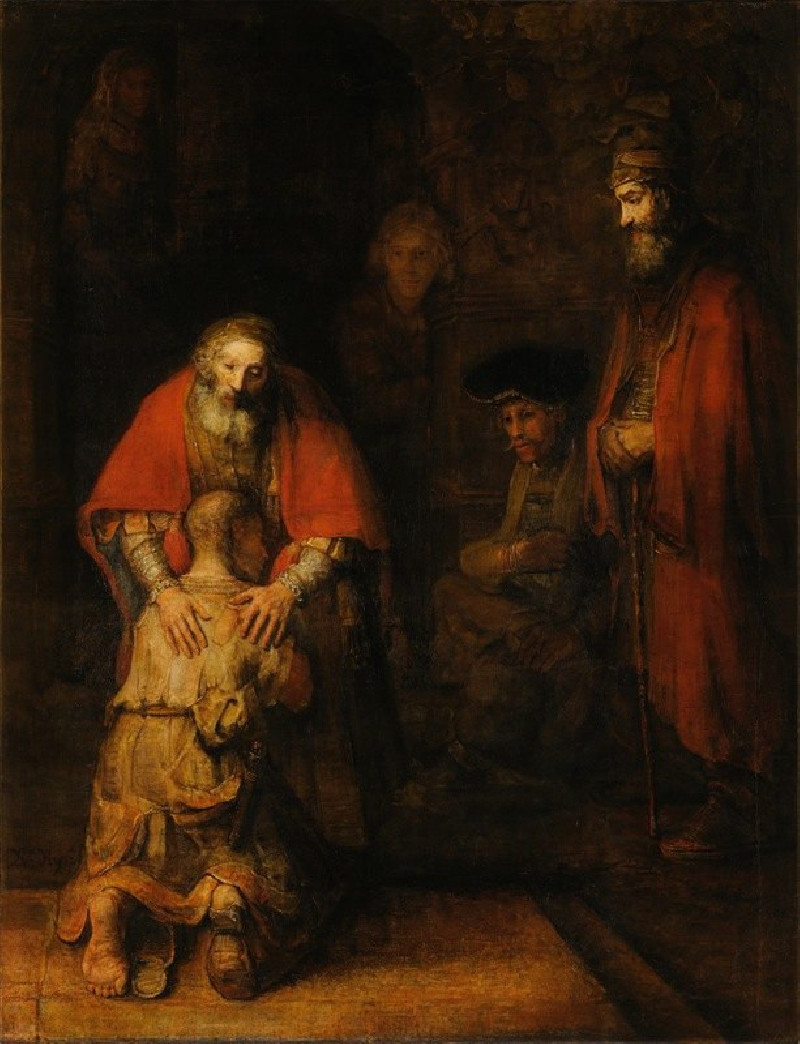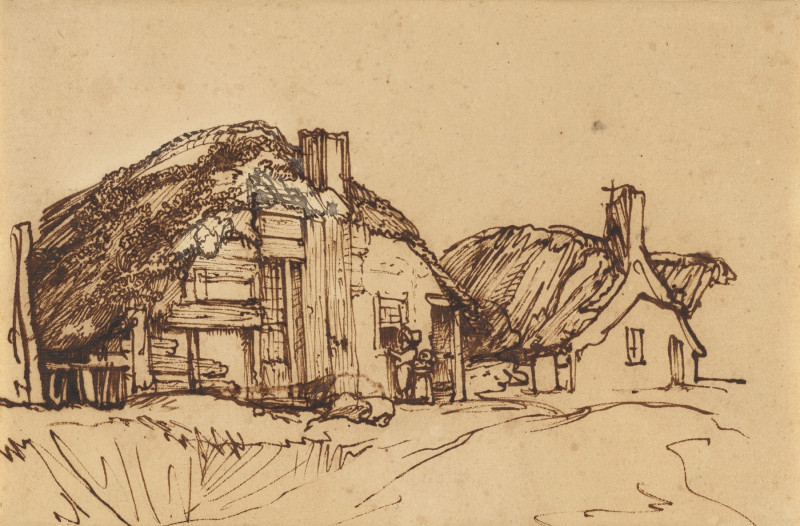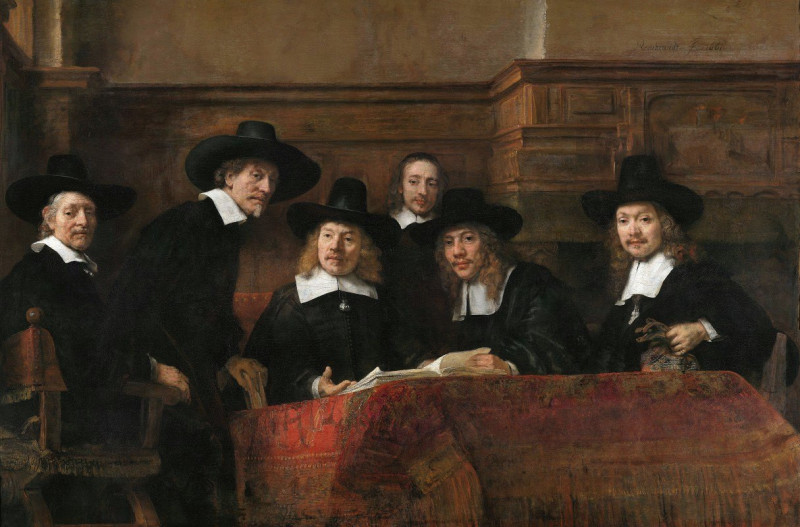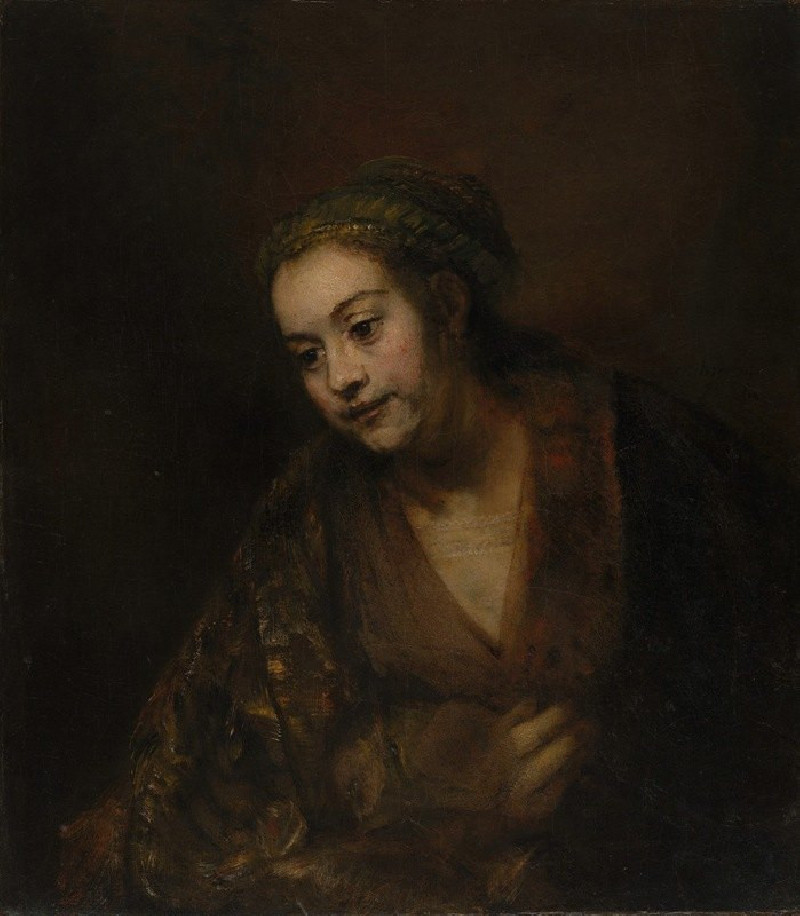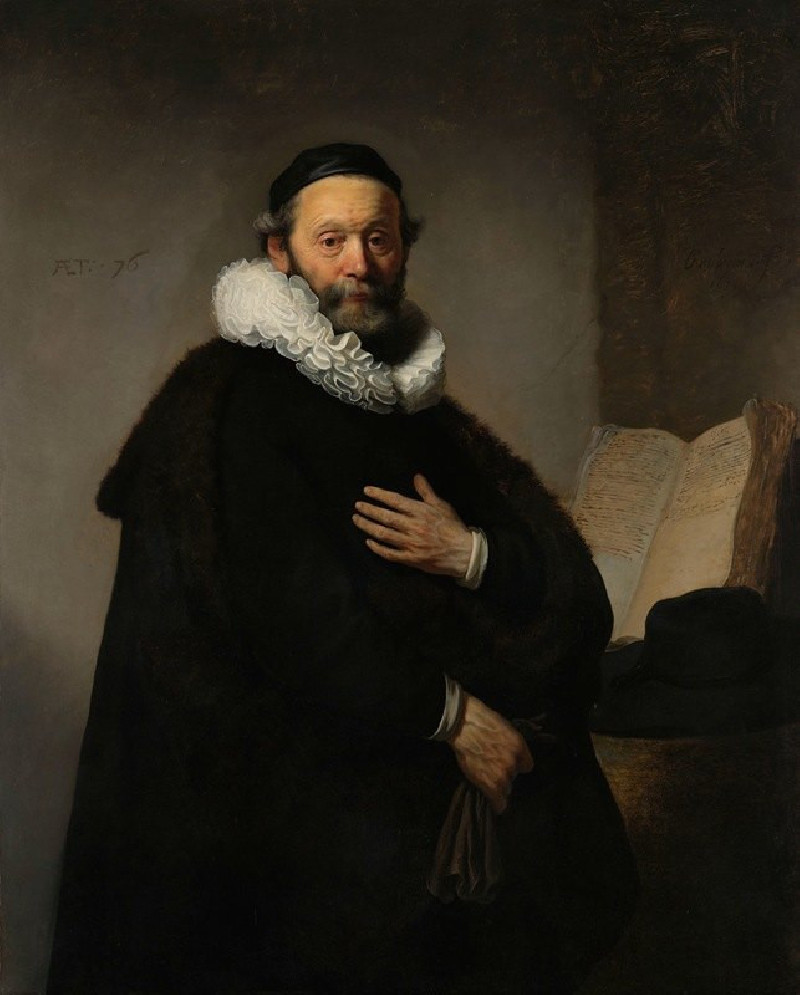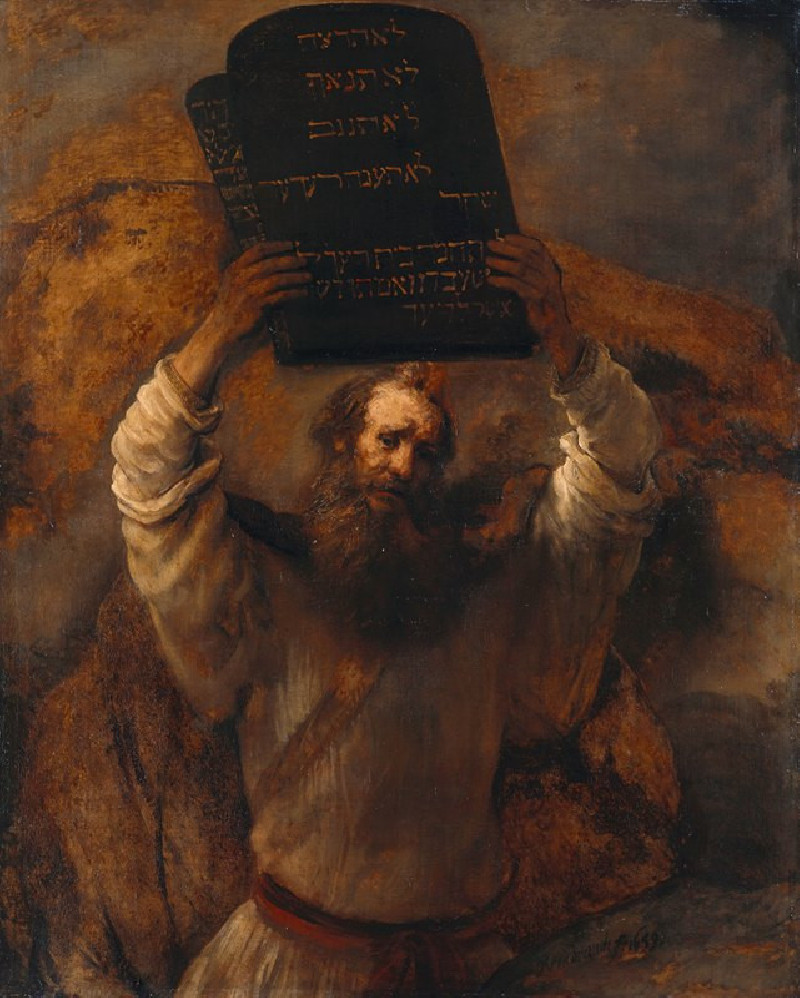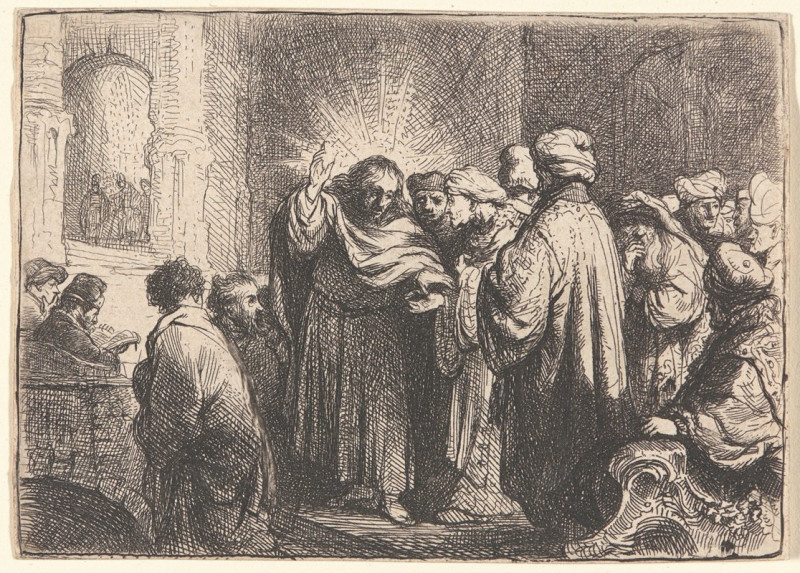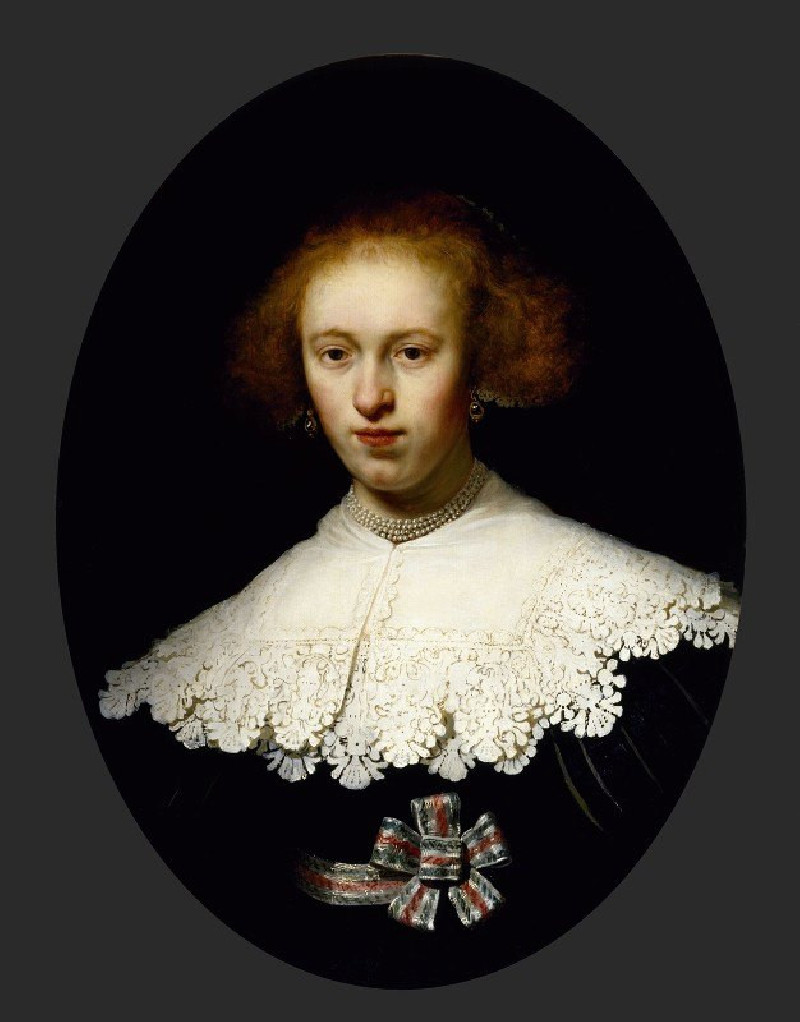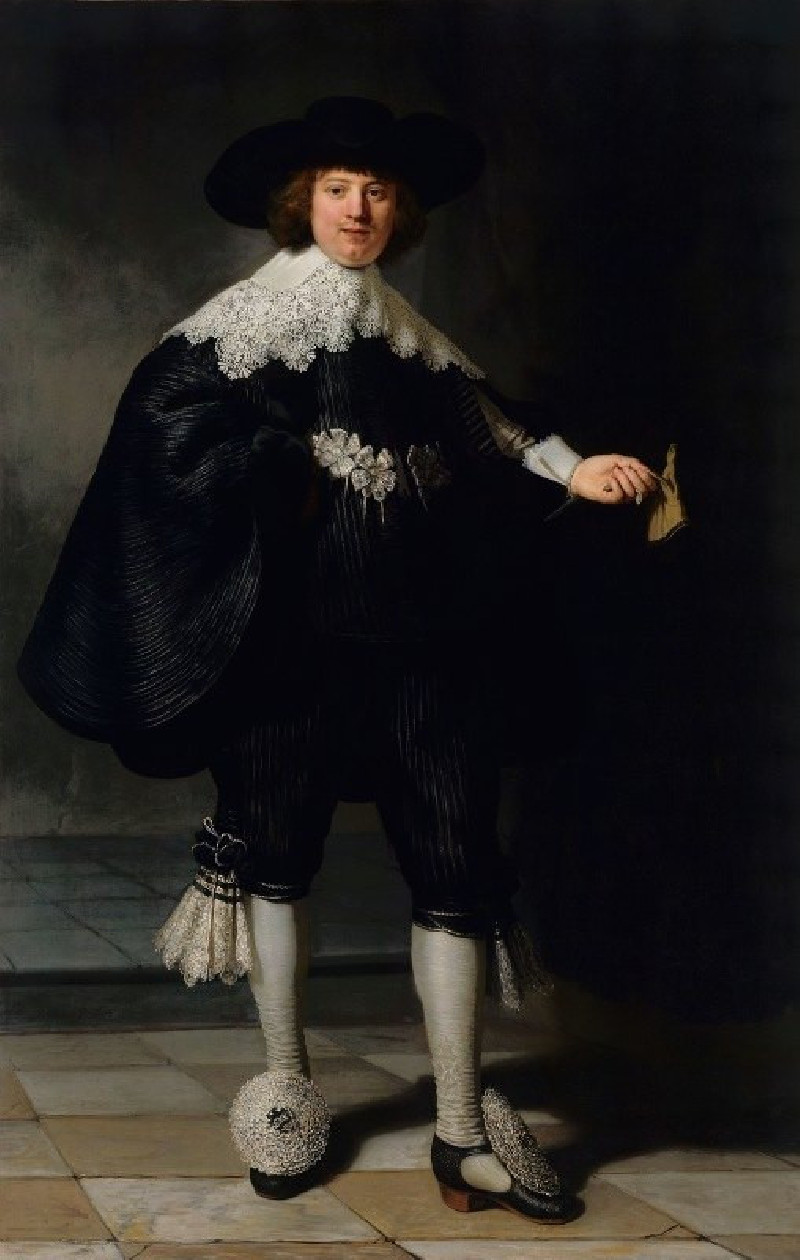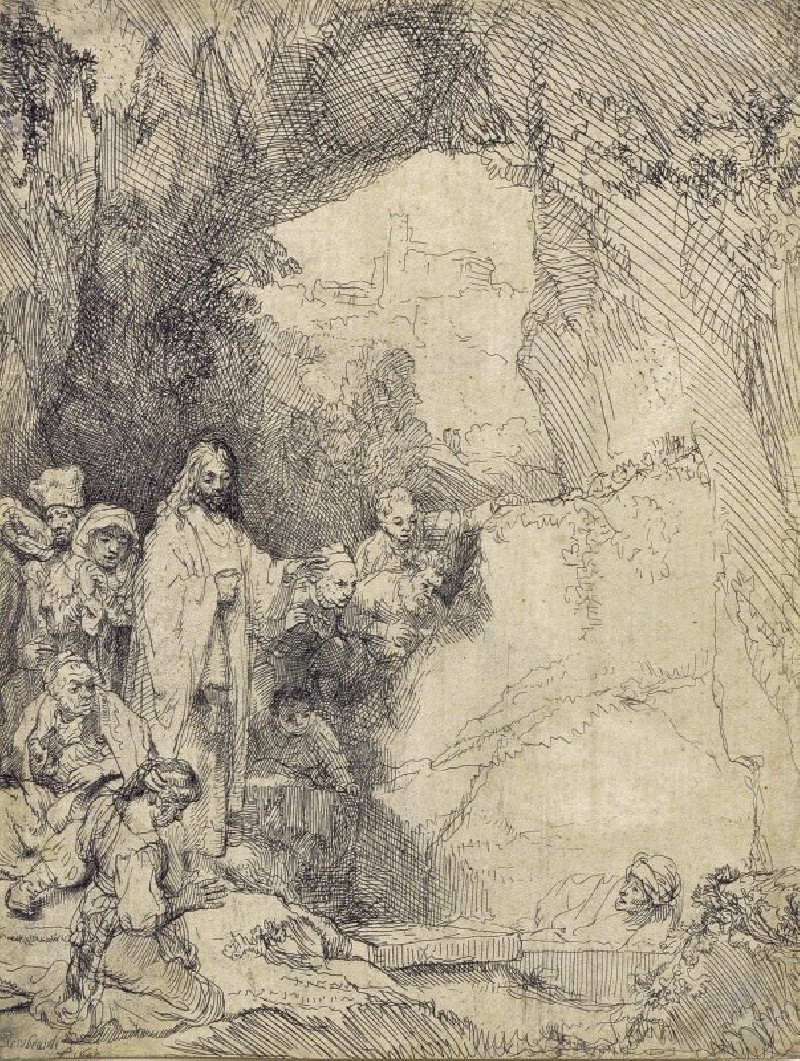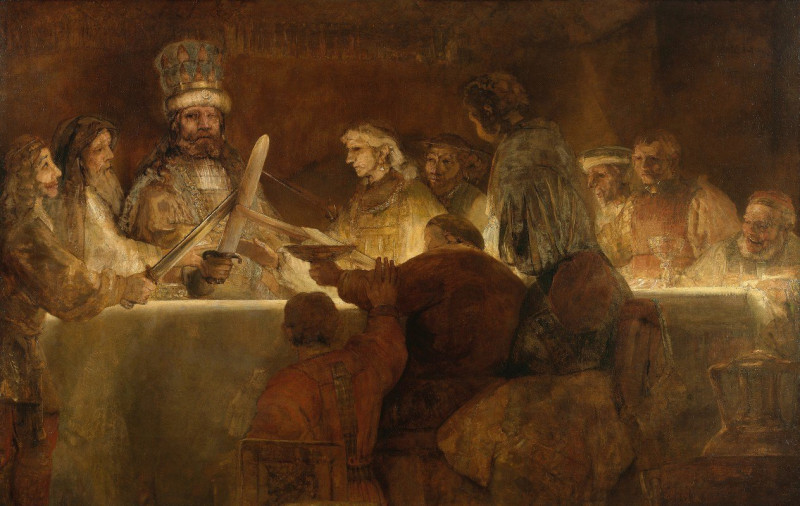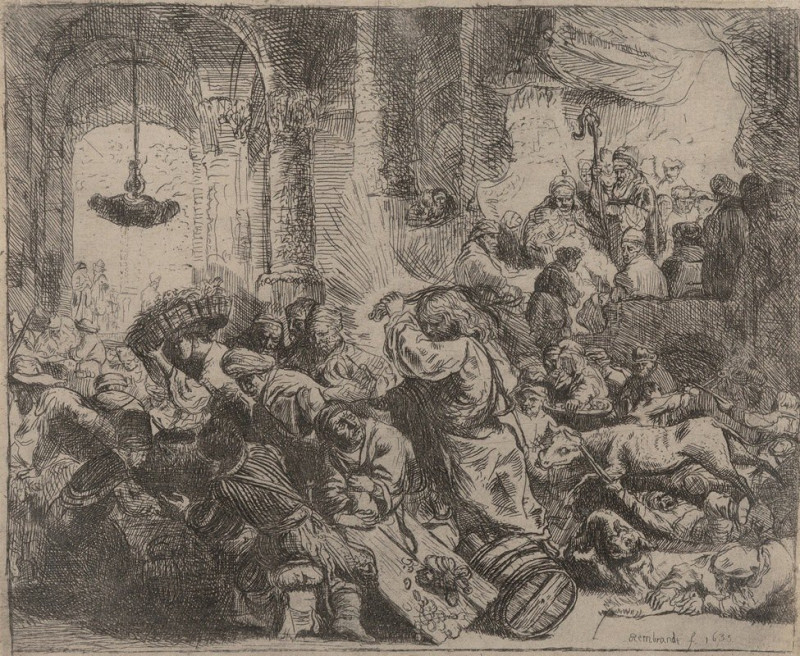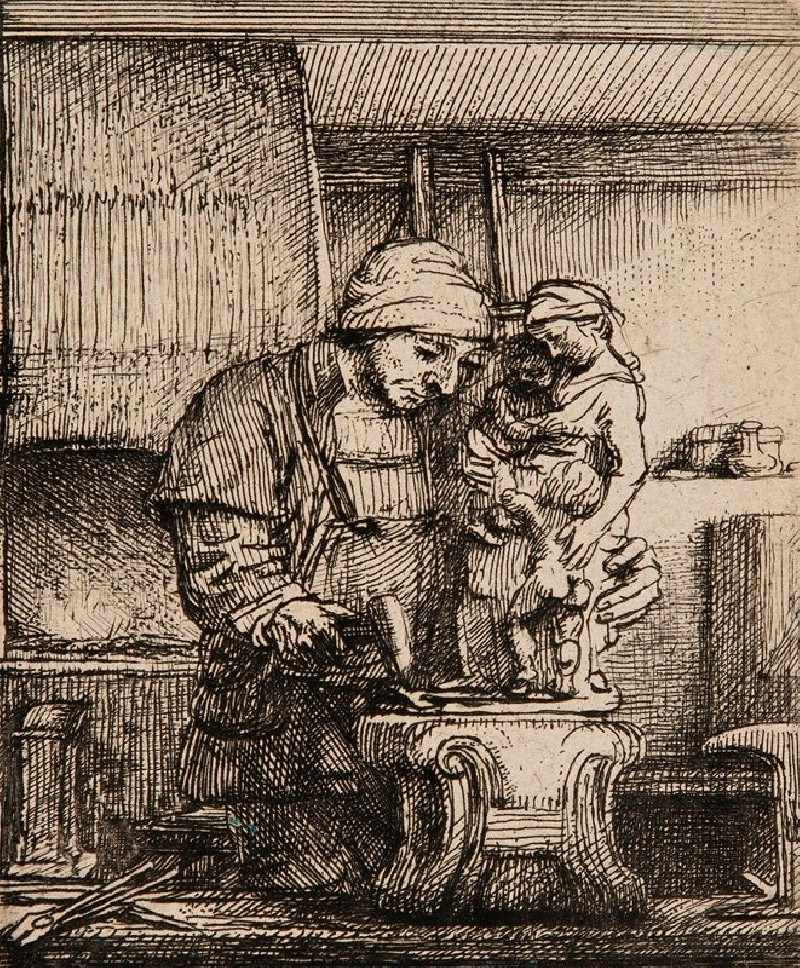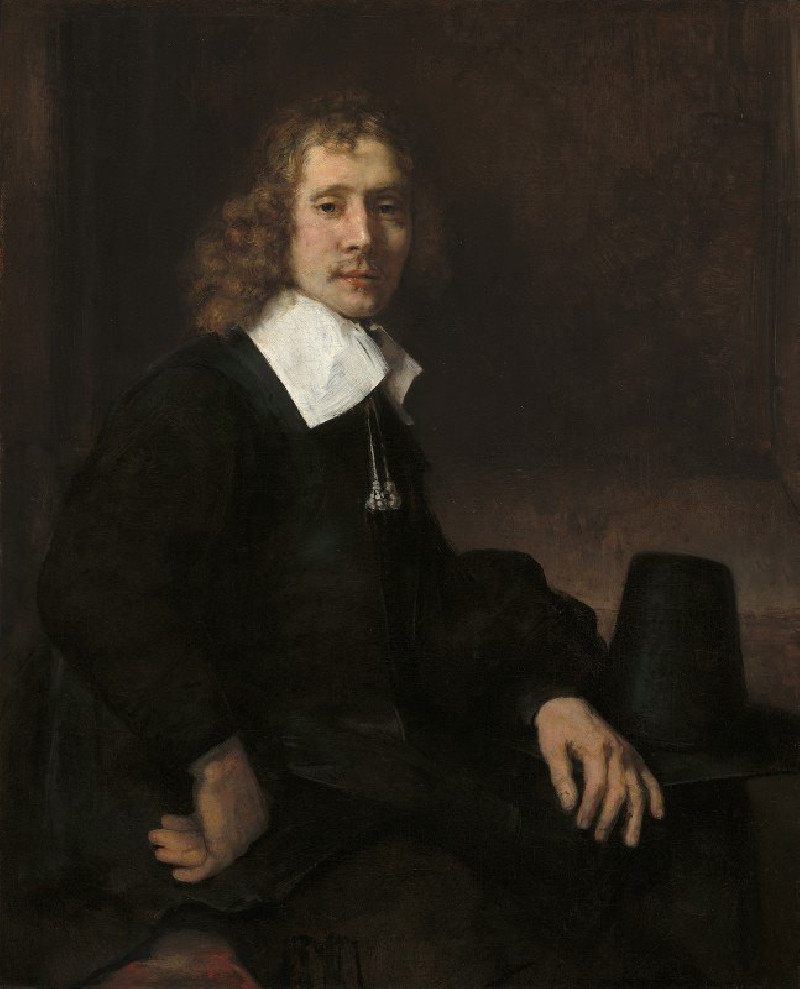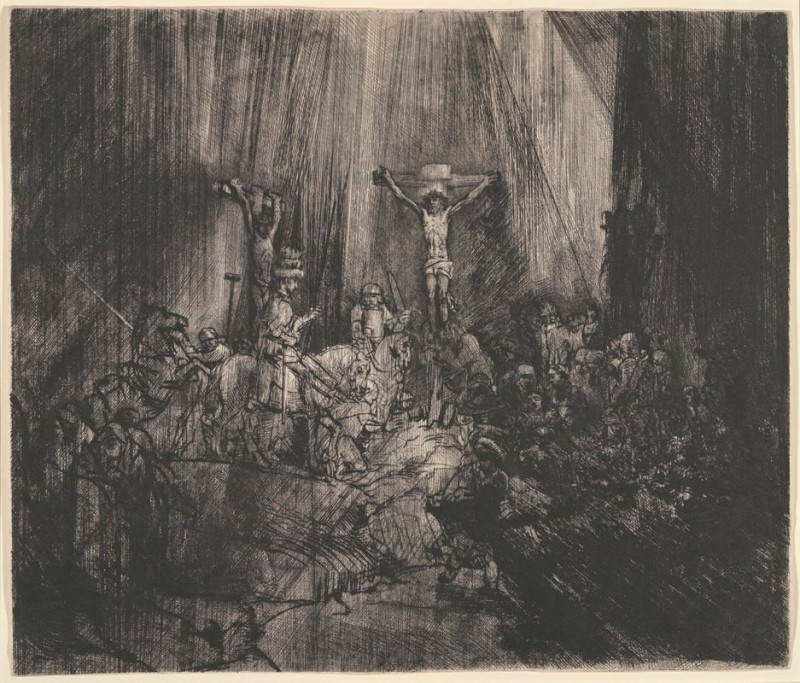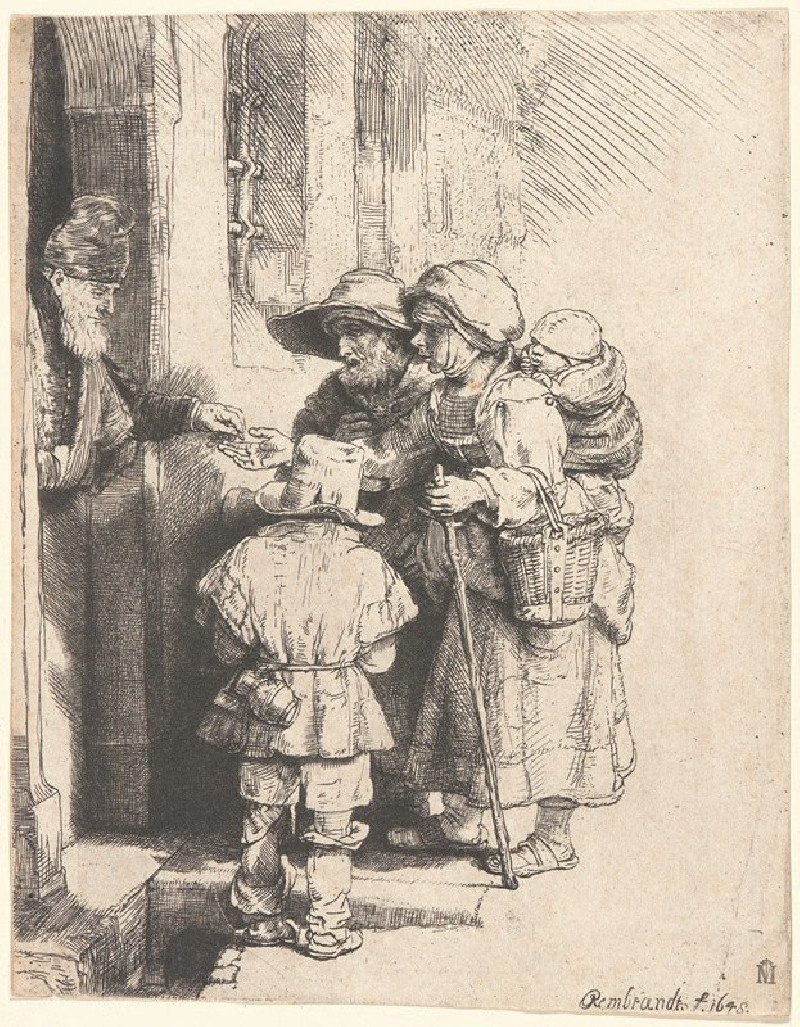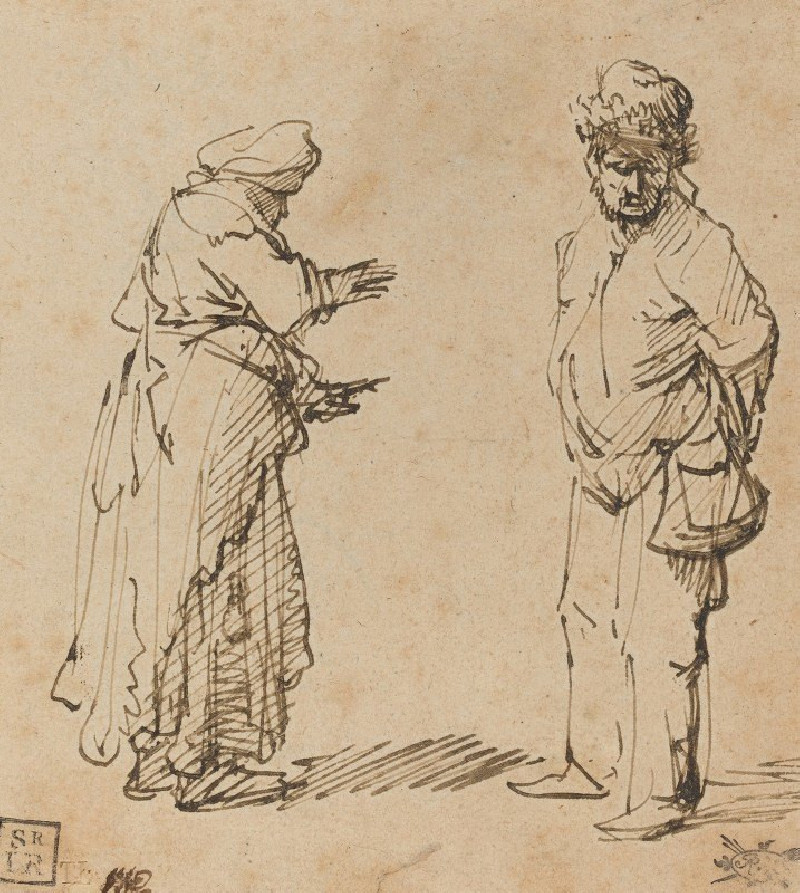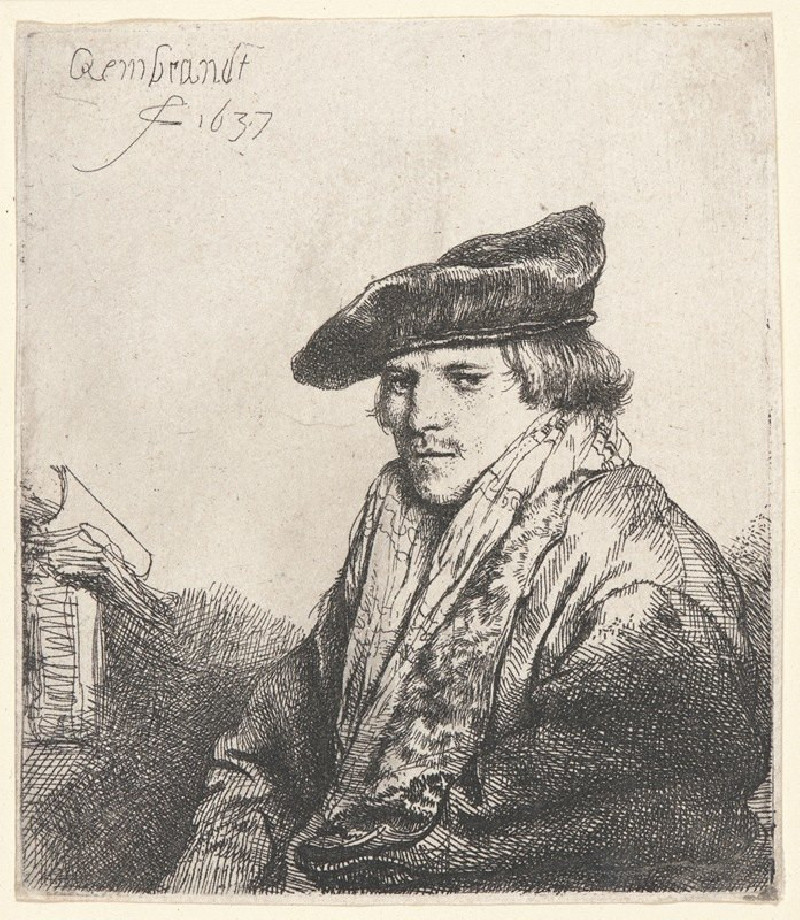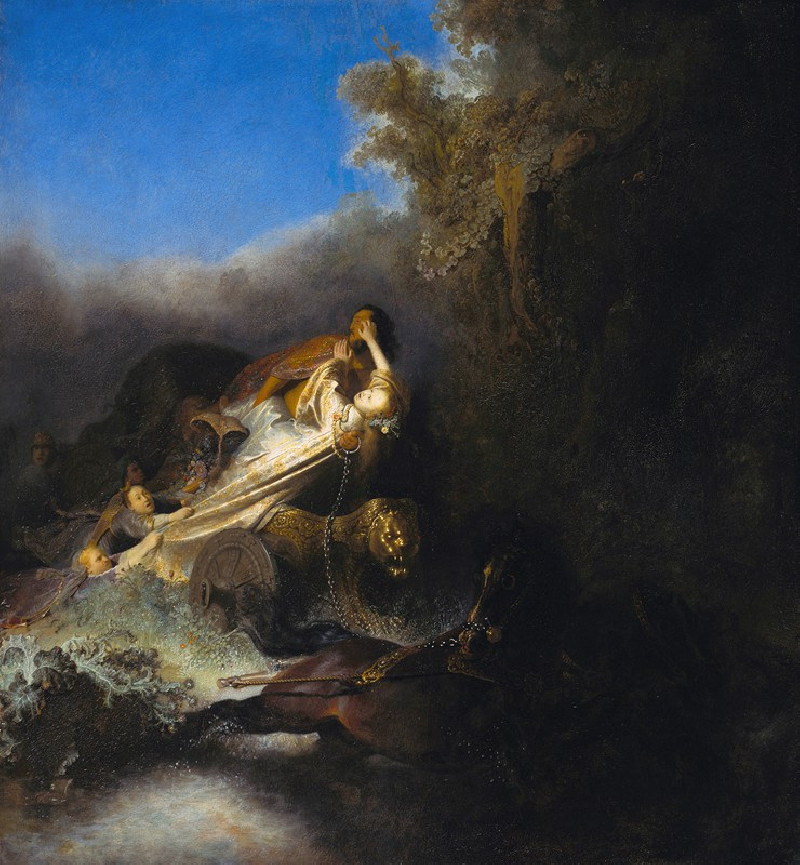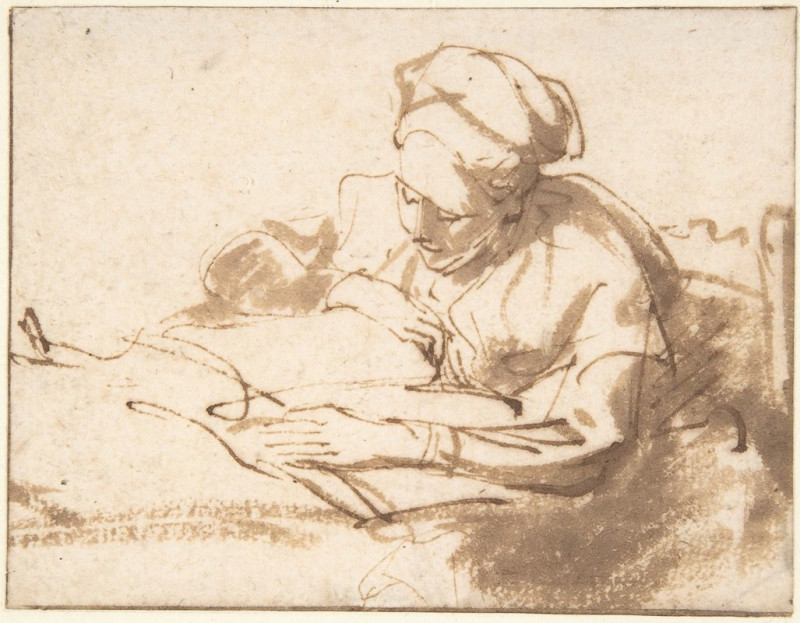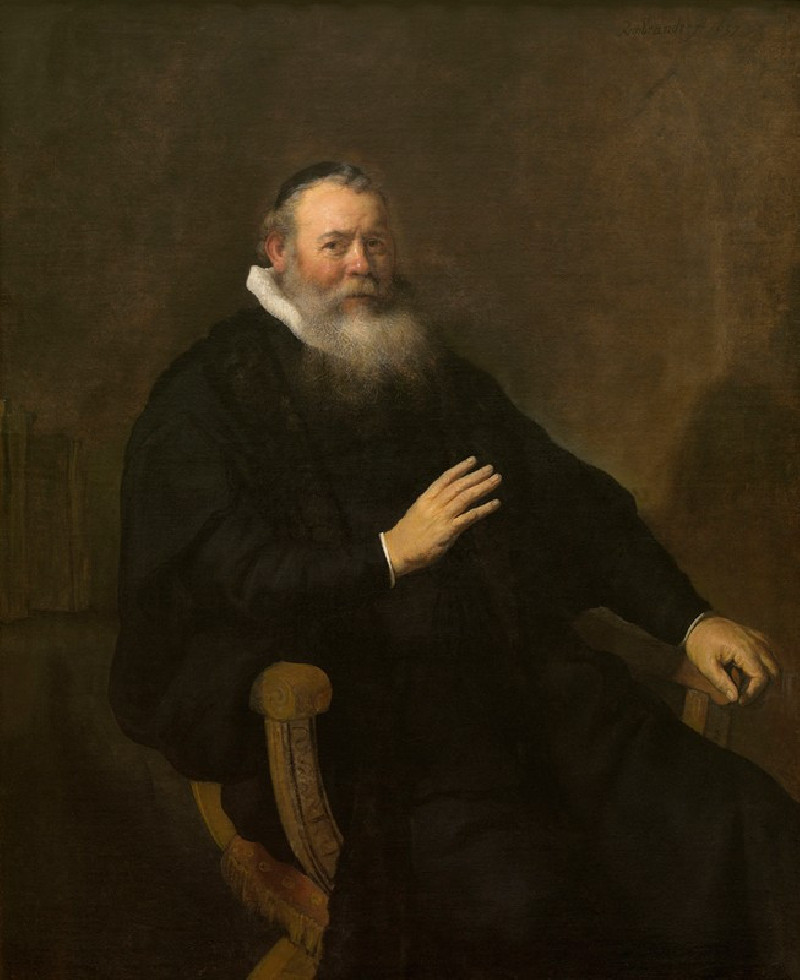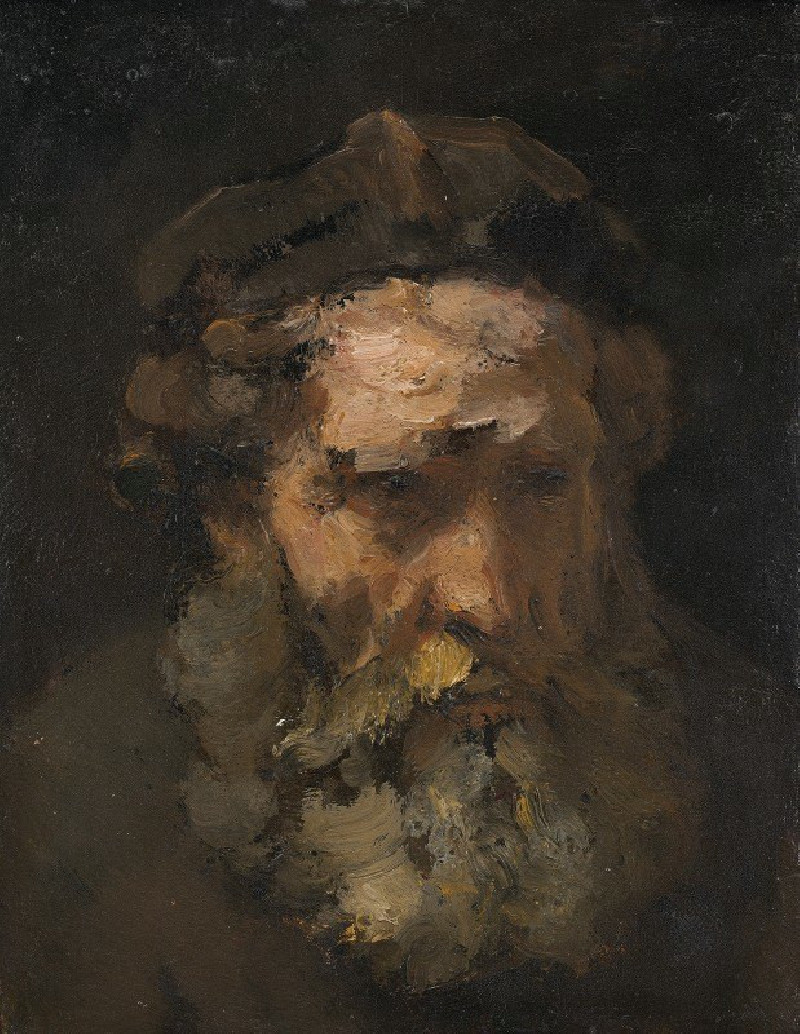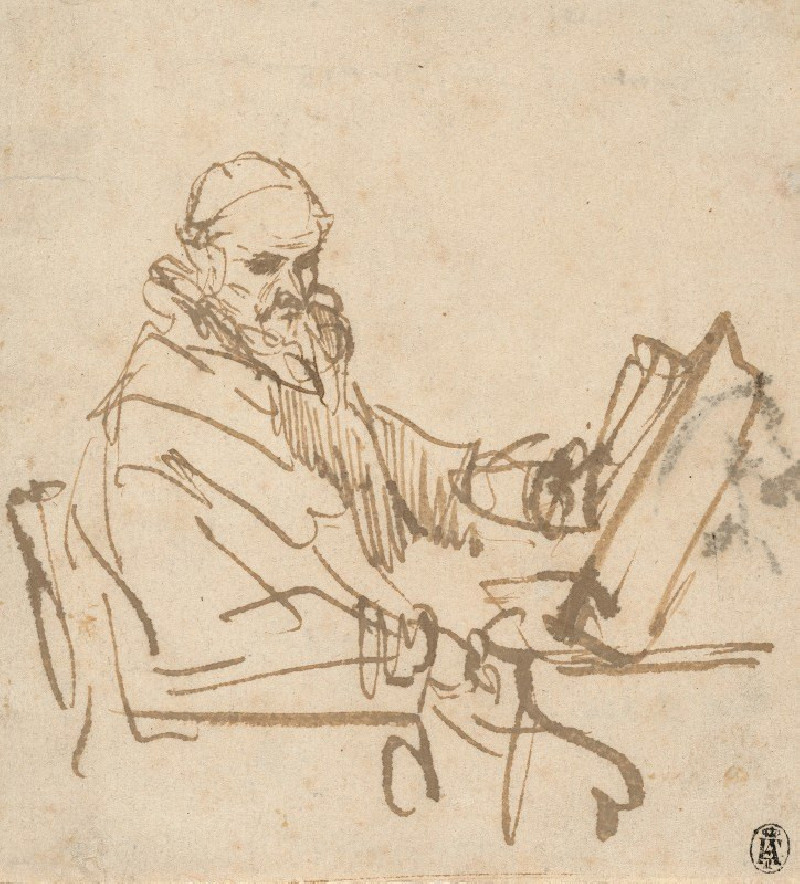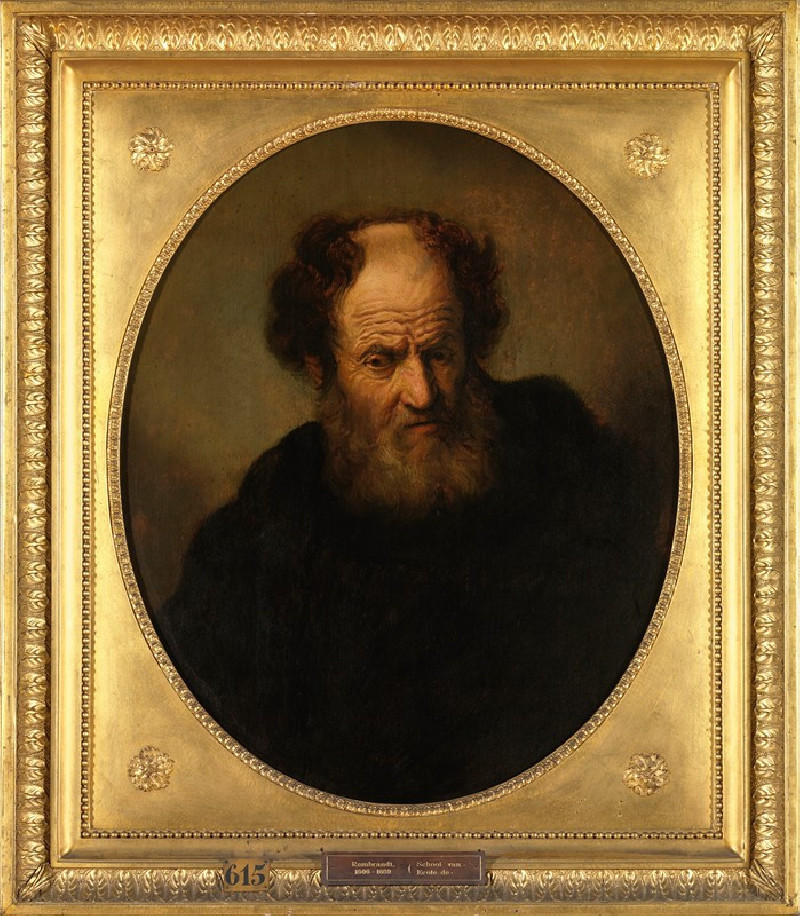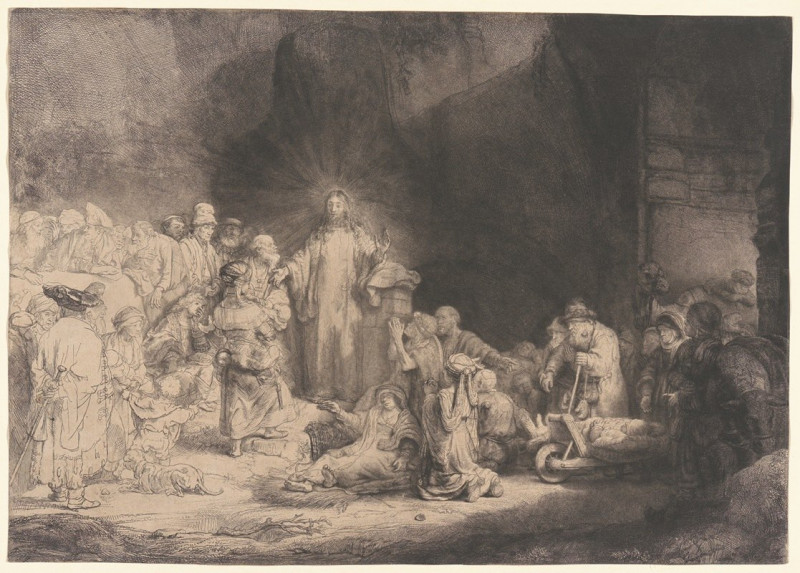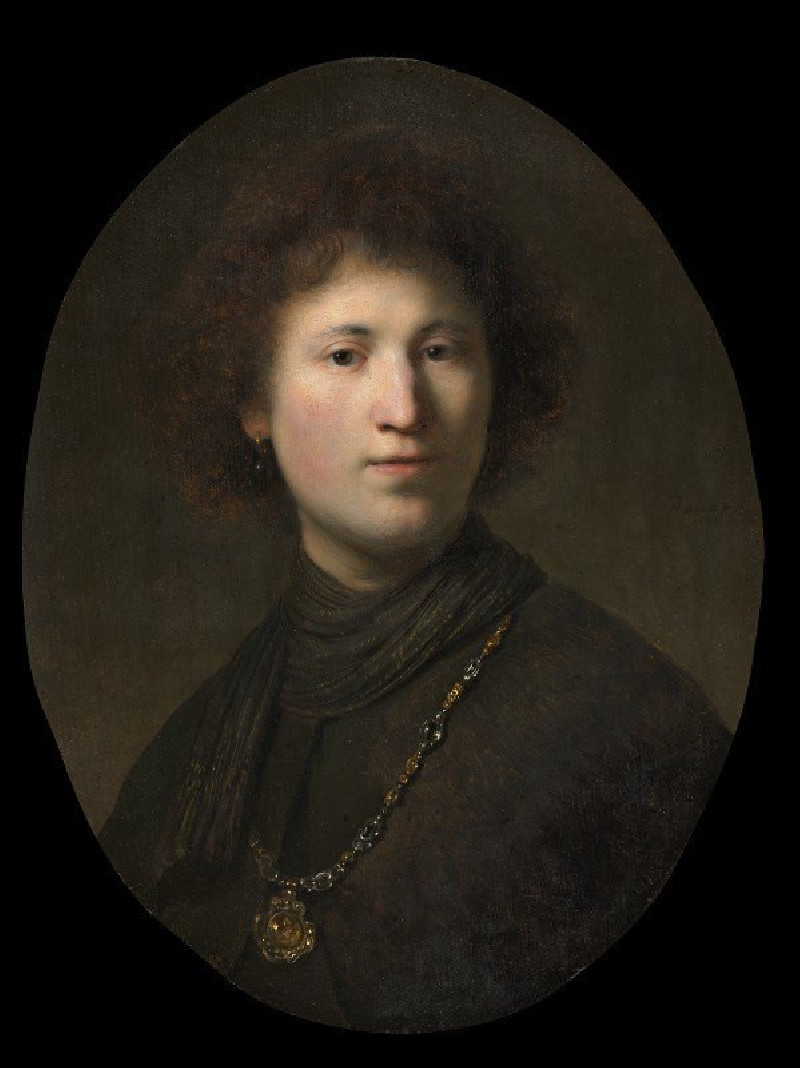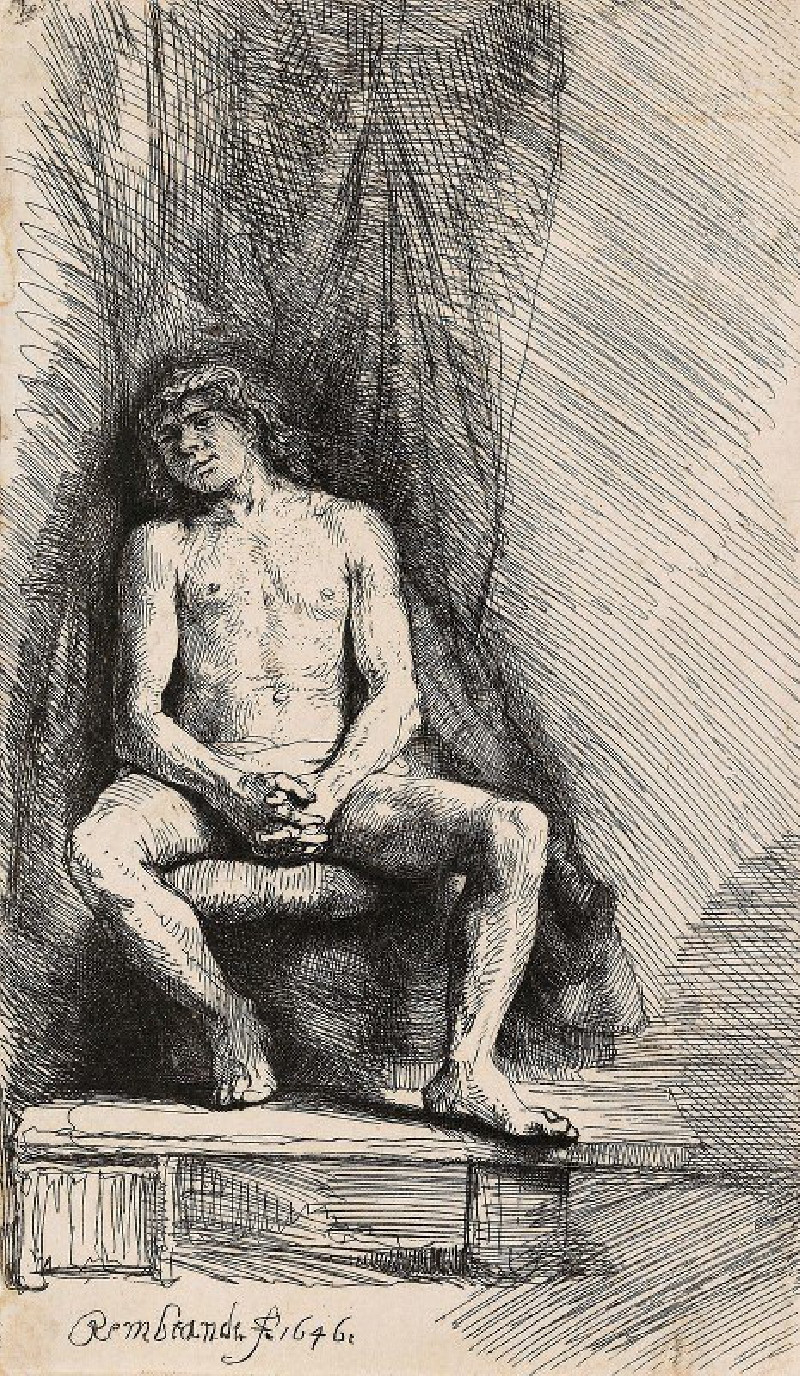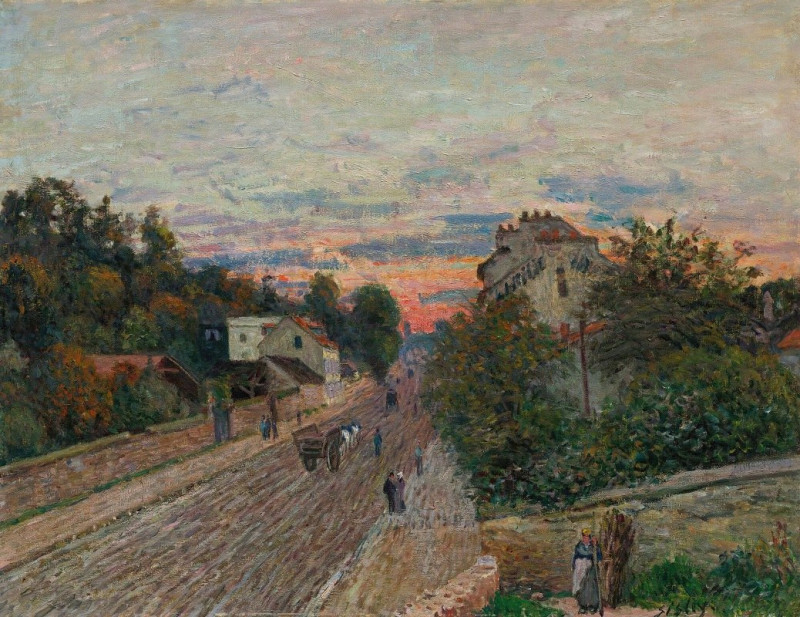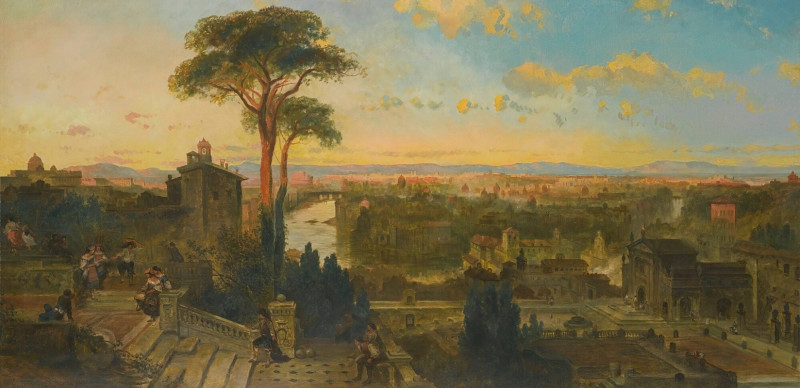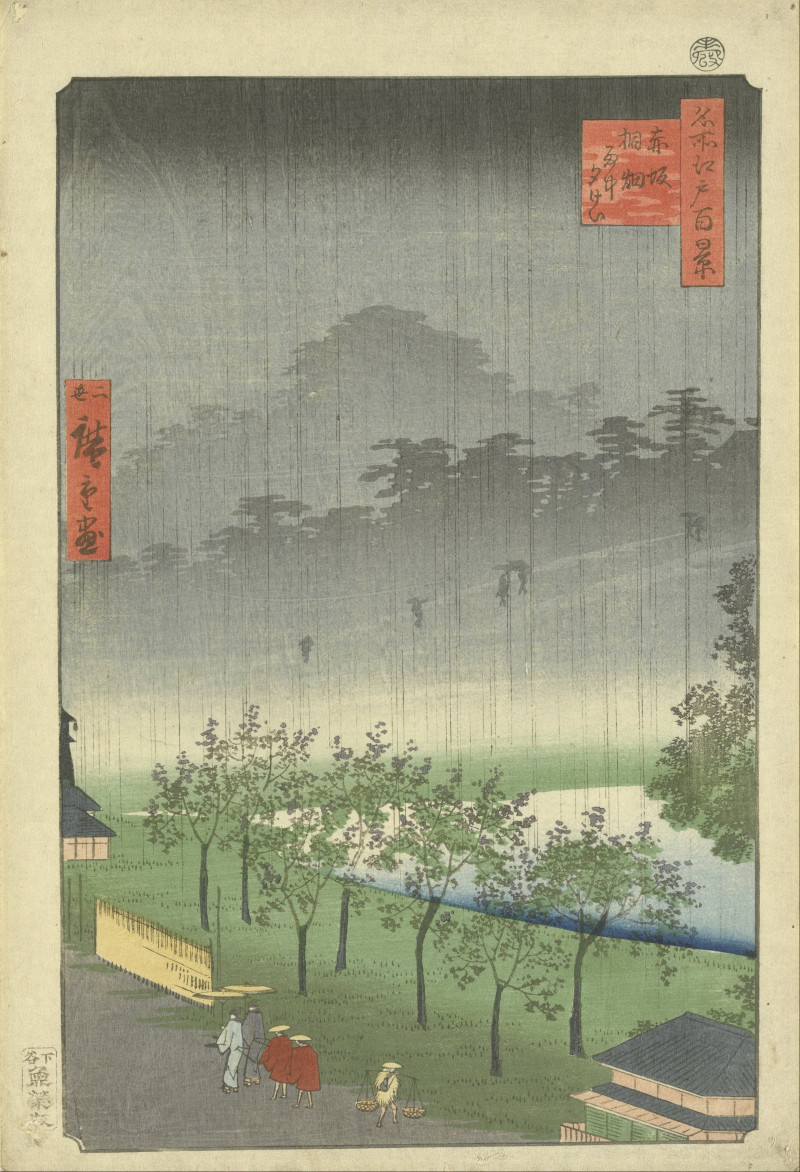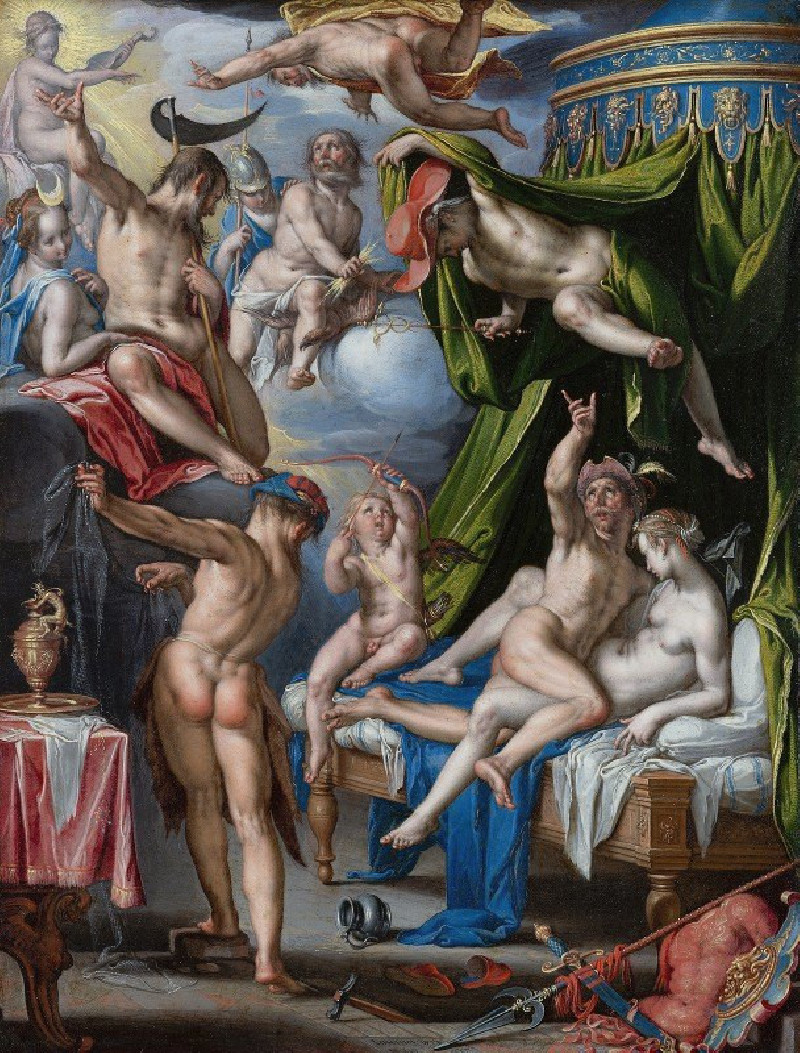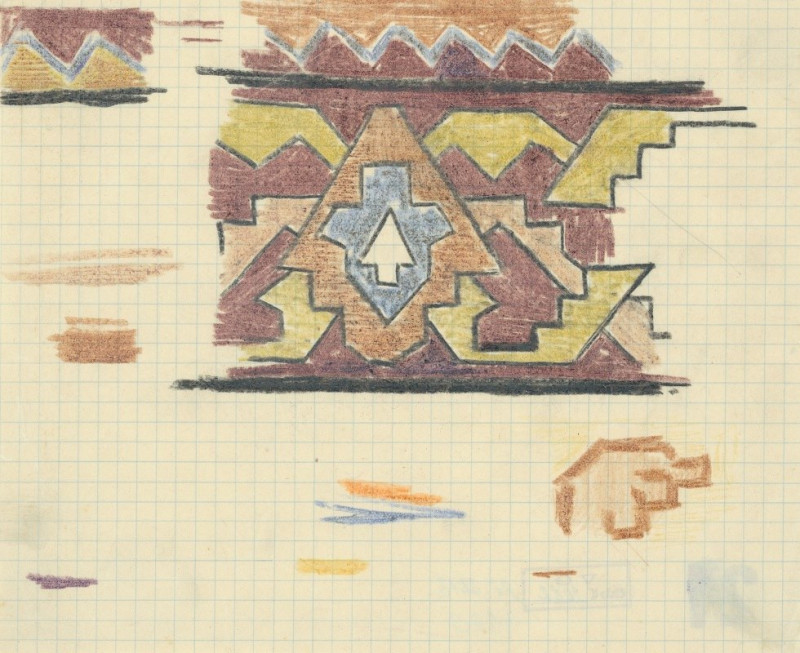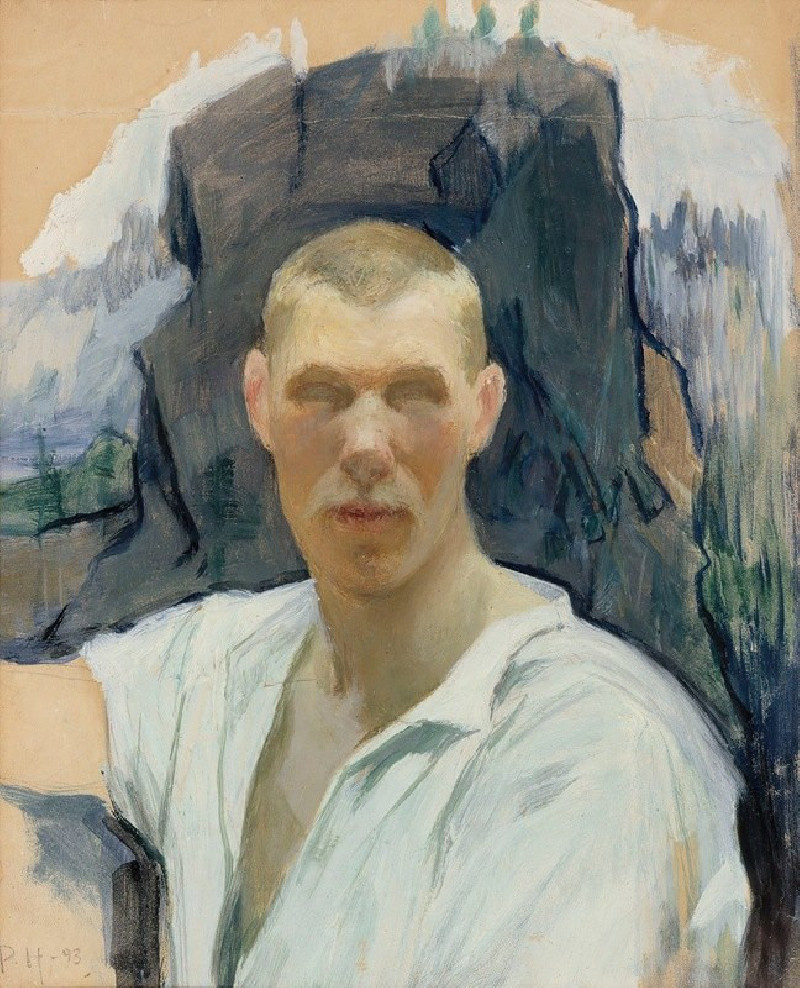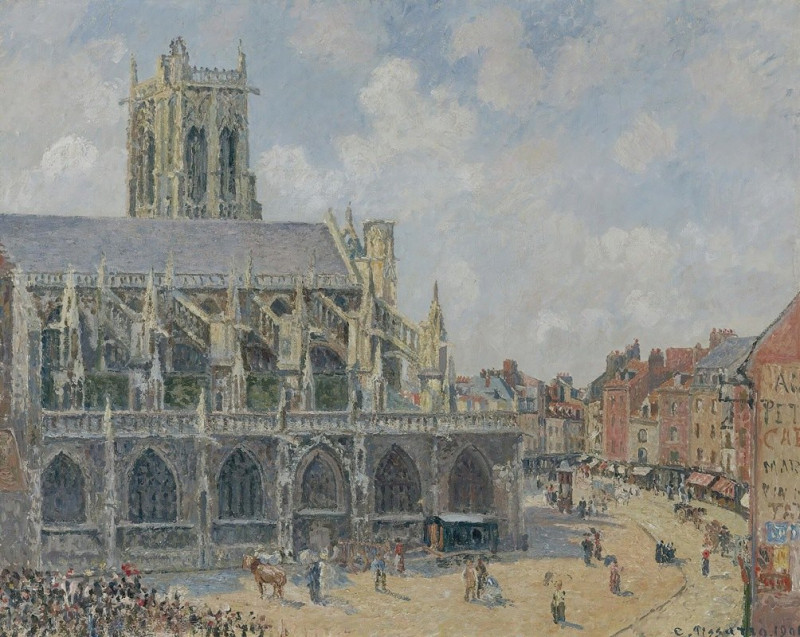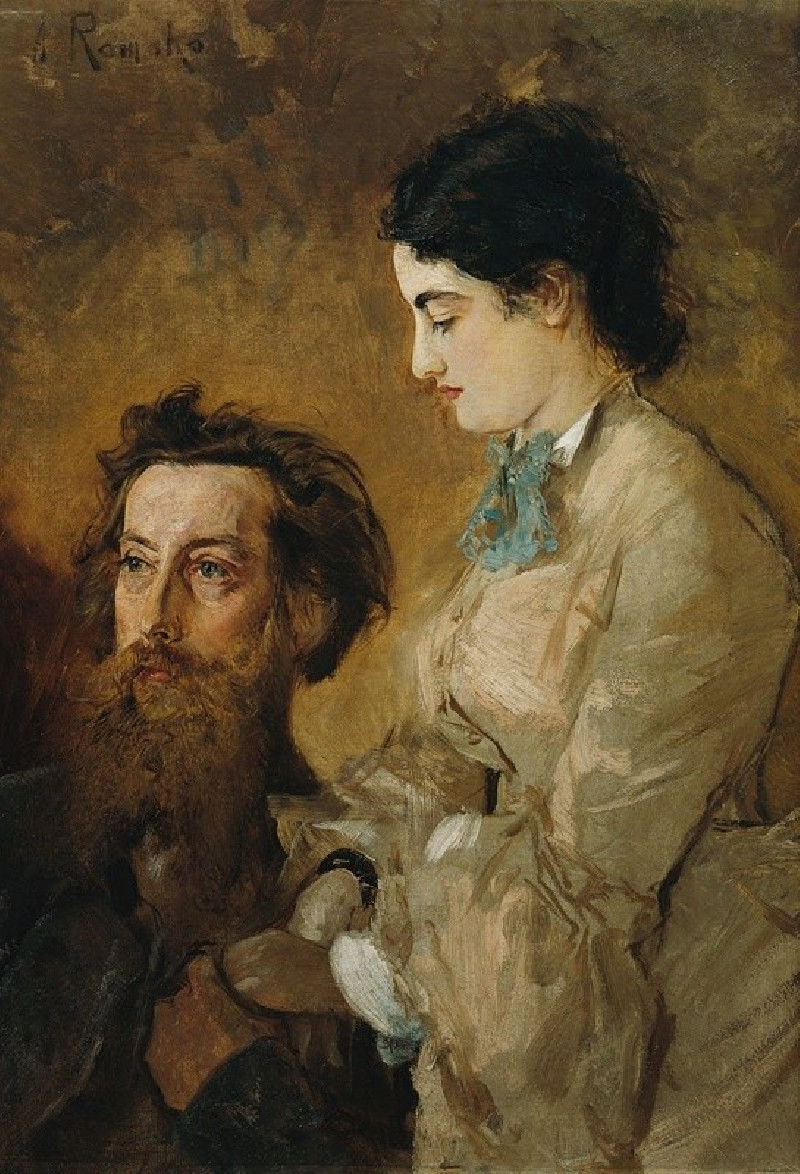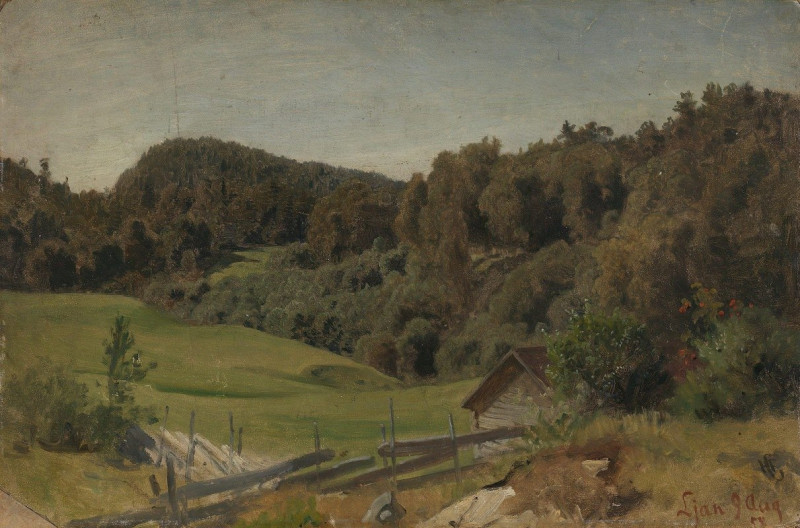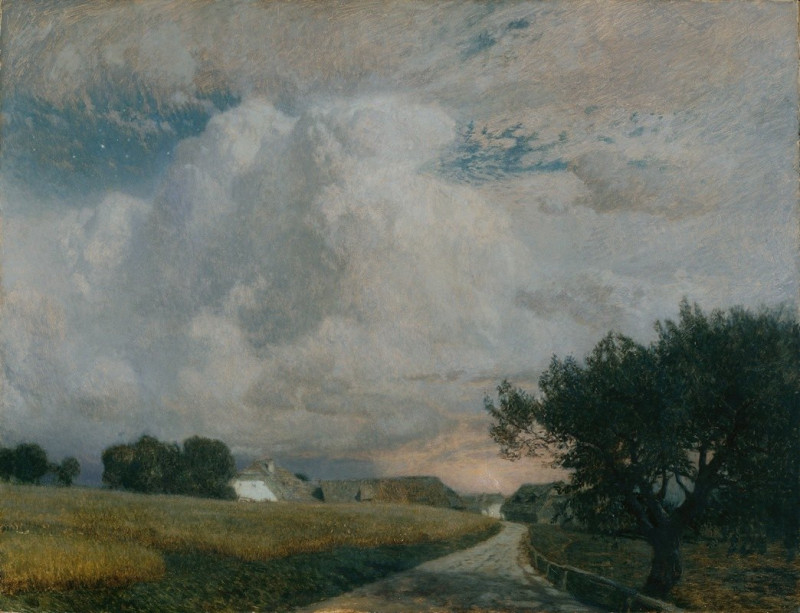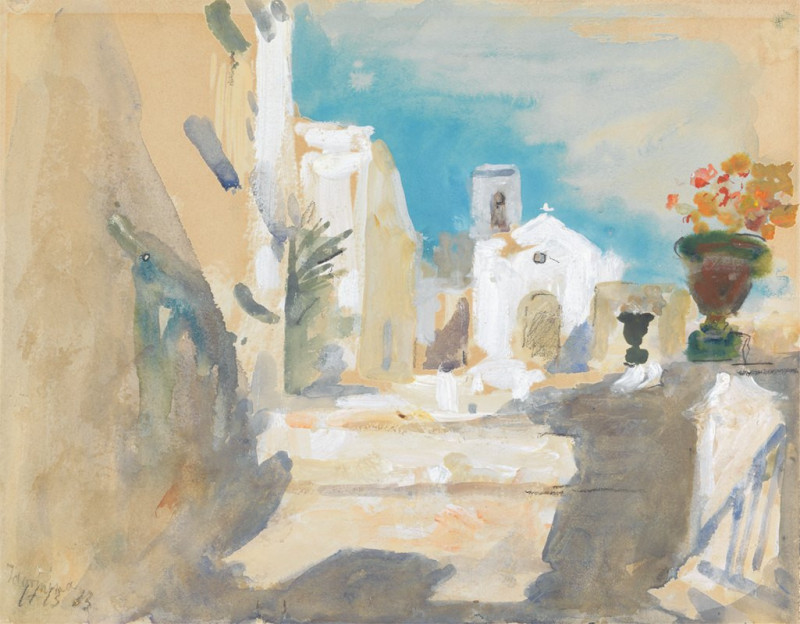Return of the Prodigal Son (1668)
Technique: Giclée quality print
Recommended by our customers
More about this artwork
"Return of the Prodigal Son" is a masterful painting by Rembrandt van Rijn, created in 1668. This profound work of art is recognized for its emotive depth and artistic brilliance, making it one of the most revered paintings in Western art history.The painting portrays the moment from the Biblical parable where the Prodigal Son returns to his father after squandering his inheritance and living a life of destitution. Visibly worn and remorseful, the son kneels before his father in a gesture of repentance, seeking forgiveness. The father, depicted as an elderly man with a compassionate expression, extends his hands in a forgiving embrace, symbolizing unconditional parental love and mercy.This scene is bathed in a dramatic interplay of light and shadow, which helps to focus attention on the emotional center of the composition—the reunion of the father and son. Rembrandt’s use of muted earth tones contributes to the painting’s solemn atmosphere, while the varied expressions of the onlookers, including another son, add layers of narrative depth to the scene.
Delivery
Returns
Rembrandt Harmenszoon van Rijn was a Dutch draughtsman, painter, and printmaker. An innovative and prolific master in three media, he is generally considered one of the greatest visual artists in the history of art and the most important in Dutch art history. Unlike most Dutch masters of the 17th century, Rembrandt's works depict a wide range of style and subject matter, from portraits and self-portraits to landscapes, genre scenes, allegorical and historical scenes, and biblical and mythological themes as well as animal studies.

